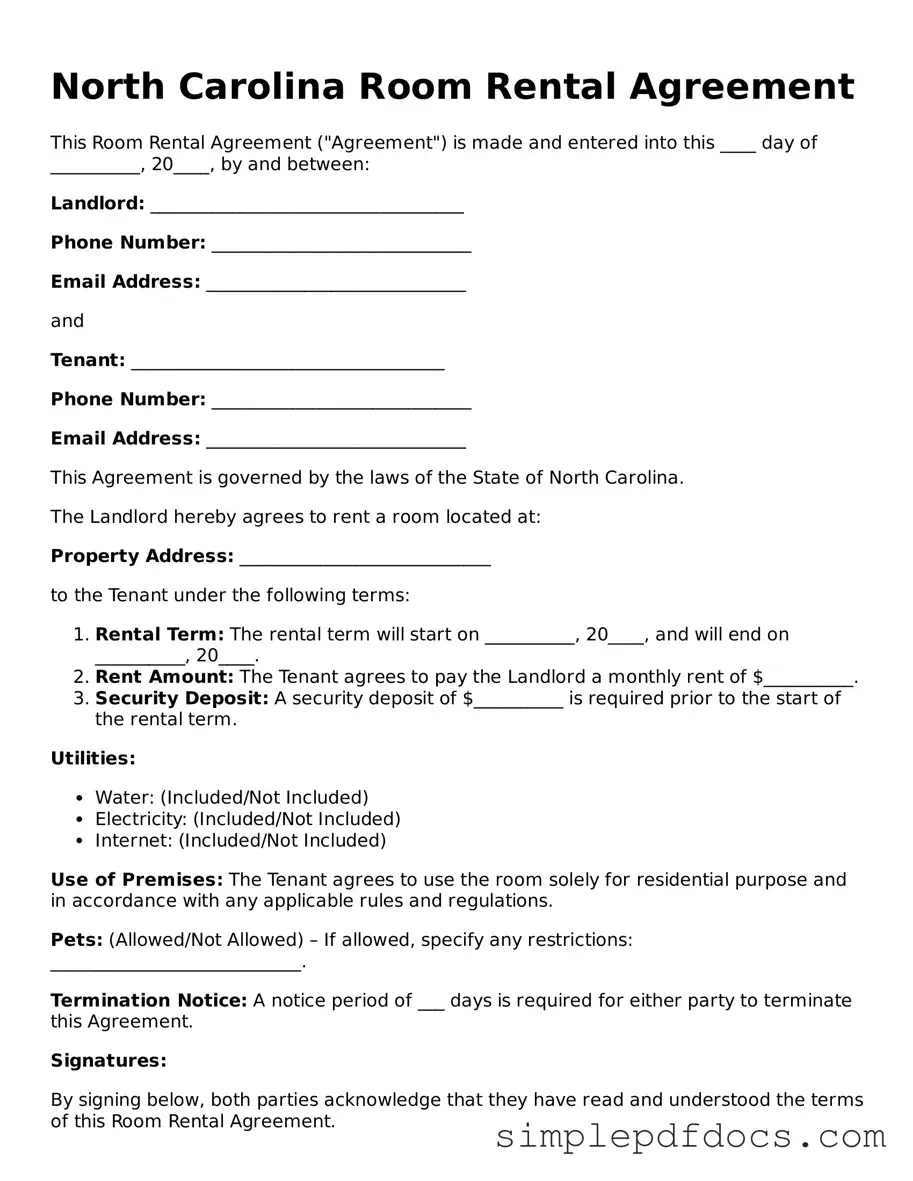Legal Room Rental Agreement Document for the State of North Carolina
The North Carolina Room Rental Agreement is a legal document that outlines the terms and conditions between a landlord and a tenant for renting a room. This agreement helps ensure that both parties understand their rights and responsibilities. By clearly defining these aspects, the form aims to prevent misunderstandings and promote a positive rental experience.
Get Document Here
